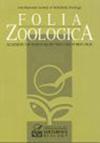印度克什米尔-喜马拉雅湿润温带森林中同域哺乳动物的活动模式和空间共现
Q2 Agricultural and Biological Sciences
引用次数: 19
摘要
摘要在喜马拉雅山崎岖不平的地形上,哺乳动物物种的活动模式和共生现象尚不清楚。利用相机陷阱对8个物种的种群活动模式和时间重叠进行了量化,并建立了空间物种共现的概率模型。丛林猫和印度豪猪倾向于严格的夜间活动,而豹猫和赤狐主要是夜间活动和黄昏活动,黄喉貂则是白天活动。亚洲黑熊、豹子和韩文没有明显的纹路。我们发现豹和亚洲黑熊的时间重叠度最高(Δ1 = 0.84, 95%CI = 0.54-0.86),其次是赤狐和豹猫(Δ1 = 0.83, 95%CI = 0.72-0.91)和丛林猫(Δ1 = 0.82, 95%CI = 0.60-0.91)。黄喉貂和印度豪猪的时间重叠最小(Δ = 0.11, 95%CI = 0.08 ~ 0.20)。对物种共现概率分析结果表明,在28对可能的物种对中,25对具有随机关联,1对不可分类。其余2种对与豹猫、豪猪、韩文共现呈显著正相关(Pgt < 0.05)。我们的研究结果为了解西喜马拉雅地区独特的哺乳动物群落提供了新的视角,并将为未来复杂系统中动物物种共存机制的研究提供帮助。本文章由计算机程序翻译,如有差异,请以英文原文为准。
Activity patterns and spatial co-occurrence of sympatric mammals in the moist temperate forest of the Kashmir Himalaya, India
Abstract. Little is known about the activity pattern and co-occurrence of mammalian species coexisting sympatrically in the rugged terrains of the Himalaya. By using camera traps we quantified diel activity patterns and temporal overlap as well as probabilistic model of spatial species co-occurrence amongst eight species. The jungle cat and the Indian porcupine tended to be strictly nocturnal whereas the leopard cat and the red fox were primarily nocturnal and crepuscular, yellow-throated marten was diurnal. The Asiatic black bear, leopard and the hangul showed no clear pattern. We found highest temporal overlap (Δ1 = 0.84, 95%CI = 0.54-0.86) between leopard and Asiatic black bear followed by pairs between red fox and leopard cat (Δ1 = 0.83, 95%CI = 0.72-0.91) and jungle cat (Δ1 = 0.82, 95%CI = 0.60-0.91). The lowest temporal overlap was found between yellow-throated marten and Indian porcupine (Δ = 0.11, 95%CI = 0.08-0.20). The results from probabilistic pairwise species co-occurrence analysis suggest that out of 28 possible species pairs 25 had random associations and one pair was unclassifiable. The remaining two species pairs had positive associations of co-occurrences between leopard cat and hangul (Pgt < 0.05) and Indian porcupine and hangul (Pgt < 0.05). Our results provided new insights into this unique community of mammals of the western Himalaya and will facilitate future studies on the mechanism determining coexistence of animal species within complex system.
求助全文
通过发布文献求助,成功后即可免费获取论文全文。
去求助
来源期刊

Folia Zoologica
生物-动物学
CiteScore
1.70
自引率
0.00%
发文量
0
审稿时长
3 months
期刊介绍:
Information not localized
 求助内容:
求助内容: 应助结果提醒方式:
应助结果提醒方式:


